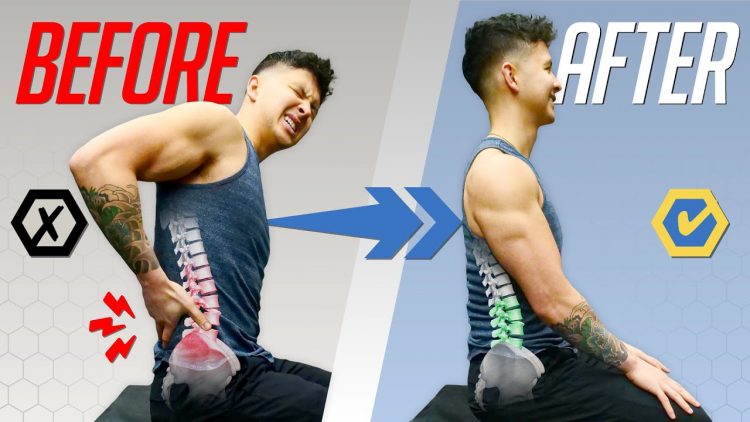There is no quick fix for low back pain. Often, trying seek how to fix low back pain relief with back pain stretches, low back strengthening exercises, pilates, abs workouts, or just lying in bed often does more harm than good. While these methods may provide some form of lower back pain relief in the short term, the back pain soon returns and often worse than before. Now while the true “fix” to low back pain is highly individual, one of the easiest ways that we can potentially fix our low back pain is by paying attention to the position of our spine throughout the day. World renowned back pain researcher Dr. Stu McGill explains that the spine can be thought of as a wire coat hanger. If you constantly bend the hanger back and forth over and over, eventually it will fatigue and break. The spine experiences the same cumulative effect with repeated bending. Moving in the most spine conserving way possible is thus key. We can implement this in 3 steps.
The first step here is just to define the various movements that cause low back pain for you throughout the day. If certain postures or movements such as sitting for prolonged periods, tying your shoes, or performing a specific exercise in the gym induces pain, then identify these and avoid or modify them to make them pain-free. You’ll then be able to reduce the cumulative load placed on your spine and can slowly teach your spine how to move pain-free again.
The next step is to now modify your posture throughout the day to get some much-needed lower back pain relief. Here’s a simple self-assessment created by Dr. Stuart McGill. Stand in a relaxed upright posture and feel your lower back muscles with your hand. Lean back slightly until these muscles shut off and feel soft and relaxed. Slowly lean forward until you identify the point at which they become active and hard again. The objective is to discover the position that allows you to maintain an upright standing posture without engaging your low back muscles. This simple drill demonstrates how important proper standing posture is to relax your back muscles, and the same applies to sitting.
The third step to fix your low back pain is to modify how you bend over to perform tasks such as tying your shoes, picking up an object, or even performing a lift in the gym. You’ll need to implement what’s known as a hip-hinge. To help learn this, Dr. Stuart McGill recommends the “short stop squat”.
Stand upright with your feet spread shoulder width apart. Place your hands on your thighs. Keeping your spine straight, and bending at the hips, slide your hands down your thigh while moving your hips back behind you until you have lowered yourself to a point where the thumb crotch of each hand can be placed around and atop the kneecap. Your knees should fall in line mid-way between the heels and toes. Work at adjusting the curvature of your spine to a pain free or “sweet spot” posture. To prepare to ascend back up, begin by stiffening your torso by applying the abdominal brace. Then push your shoulders down and away from your ears by using your pecs and lat muscles to transmit your weight onto your knees. Now concentrate on pulling the hips forward while maintaining a stiff back, as you draw your hands up the thighs.
Practicing this proper technique ensures that you’re able to complete any of these tasks without placing added strain on your spine, in turn, offering low back pain relief. The same applies to lifts like deadlifts in the gym as well. Before lifting the weight, stabilize your back by applying the abdominal brace and twisting the bar to engage the lats. Focus your attention on simply pulling the hips forward and dragging the weight up the thighs just like we did with the short stop squat, but now with added load.
Regardless of what caused your back pain, part of your road to recovery and prevention will always be practicing spinal hygiene. By properly implementing what we went through in this video into your daily routine, while making an effort to simply move more and avoiding any static positions for too long, you’ll successfully be able to minimize the stress placed on your lower back and the pain you may be experiencing.
And for those looking for a complete step-by-step program that uses science to show you how to properly train AND eat week after week to transform your body in the most efficient and injury-free way possible, then take the analysis quiz to discover which science-based program would be best for you and where your body is currently at below:
https://builtwithscience.com/bws-free-fitness-quiz/
Subscribe to my channel here:
https://www.youtube.com/jeremyethier/?sub_confirmation=1
Dr. Stuart McGill’s books:
MUSIC: https://soundcloud.com/iamryanlittle
